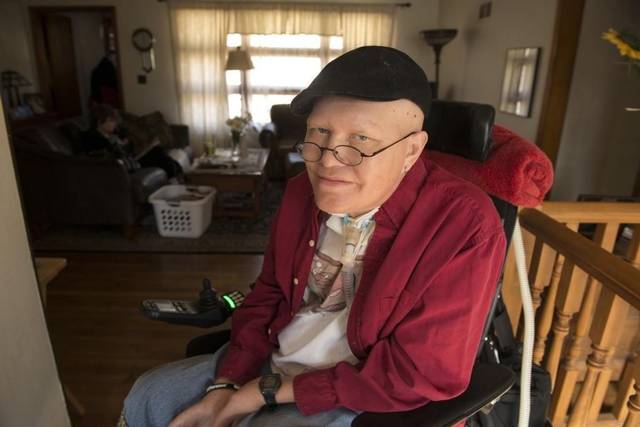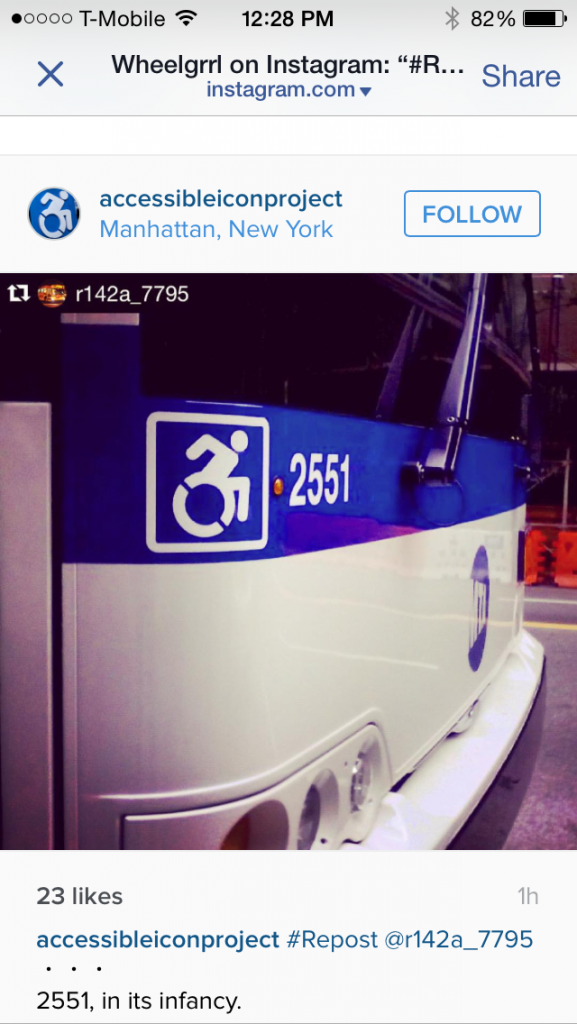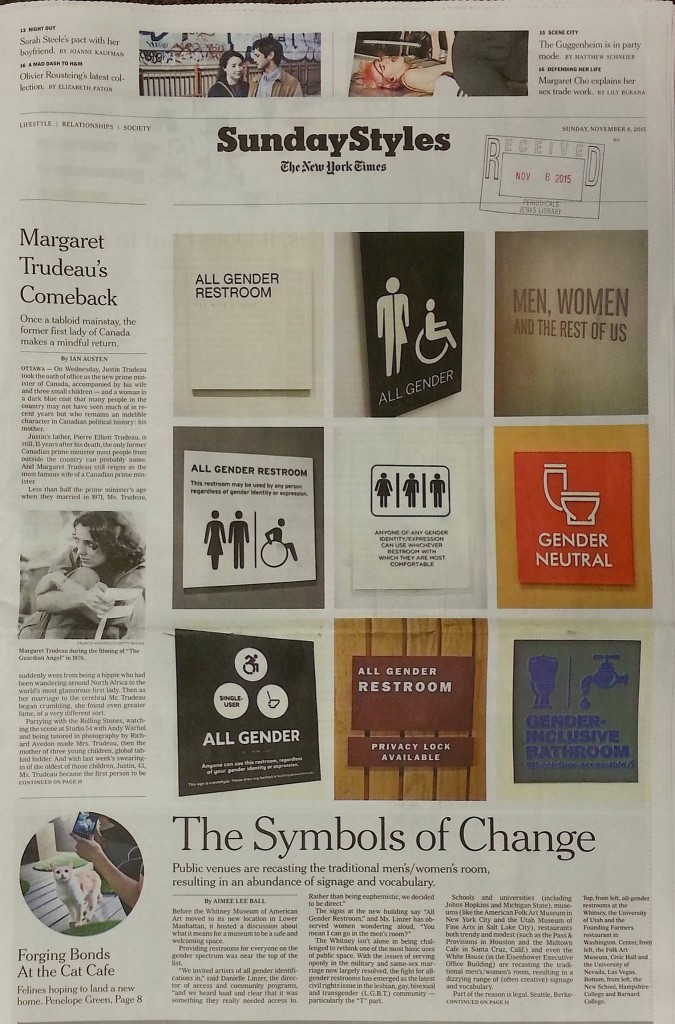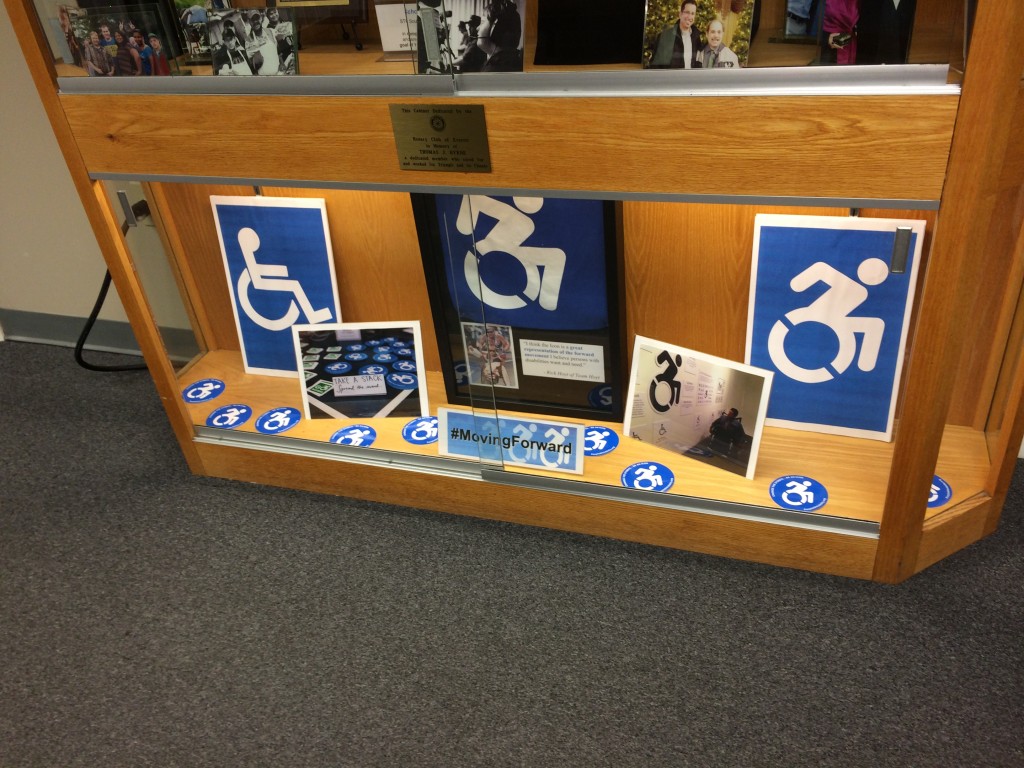Recently, a new emoji was added to the Apple iSO10 update, and the Accessible Icon team was very pleased to learn that the accessible icon was included for the social media world to use on a daily basis. With the new icon emerging into the digital world, people who were unfamiliar with the project wanted to know more about the icon that represents people with disabilities as active and engaged. In more detail, I wrote an article about the story of the accessible icon that was published here: http://www.disabled-world.com/disability/accessibility/ios-10.php. Please take the time to read why a group of people identify with the more active looking symbol and be sure to look out for the accessible icon on your phones!
Tag Archives: Accessible Icon Project
Honoring an advocate: Finn Bullers
Saddened by the news of our advocate and team member Finn Bullers. After many conversations through email and phone, I can honestly say Finn fought for the rights of those with disabilities and promoted the Accessible Icon project throughout the nation, and in particular, the midwest. I admire his tenacity, passion, and spirit. Finn you will be missed.
http://www.kansascity.com/news/local/article57673618.html
http://kcur.org/post/dogged-last-finn-bullers-championed-rights-disabled#stream/0
http://www.unitedspinal.org/farewell-to-our-friend-finn-bullers./
New York: Accessible Icon Spottings
Big News for the Accessible Icon Project: DOJ Approval
We are very excited to announce that members from the Department of Justice officially acknowledged the Accessible Icon as meeting ADA regulations (a long debated topic that prevented some people from moving forward with the symbol) at a recent conference. Kate Thurman, Disability Project Coordinator for Cambridge Commissions for Persons with Disabilities who attended the National ADA Symposium provided us with the following information:
As you saw on Twitter, I attended the National ADA Symposium in Atlanta, which ended yesterday with a Town Hall Meeting. I have pasted below my notes on the conversation during this meeting about the use of the Accessible Icon. Needless to say, I was absolutely thrilled to hear from DOJ that the use of the icon is permissible under the ADA!
Please read the article with statements from various DOJ members here: http://www.unitedspinal.org/new-access-symbol/. Although DOJ and ADA are slow to announce in writing, we believe these public statements reflect a decision that will eventually be announced formally through their social media sites.
At the conference, all 50 states, in addition to Canada, Gaum, and the Virgin Islands were represented and part of the discussion.
As of May 28, we know of over 35 states using the icon, and over 10 countries. New York State is the first state to legally adopt the icon, and New Jersey, Michigan, Kansas, and Pennsylvania are following suit. Needless to say, our team was thrilled when we heard the news.
Accessible Icon Project: Projects from around the world
One of the best parts of being on the Accessible Icon team is to regularly hear how people use the icon to create other advocacy projects and ideas. I recently was sent this animation video made by Shaheen Sheriff for a class project promoting the International Symbol of Access and the Accessible Icon Project.
I personally love how this animation highlights the movement of the icon and the different ways people with disabilities can be active and engaged in their lived environments.
Seeing the world through a lens of Signs and Symbols
How a new International Symbol of Access can change the way we see individuals with disabilities
Background
The Accessible Icon Project is an international project that has collected a lot of informal data through the many conversations, presentations, and emails received from people around the world. This research initiative is one of the first formal methods of obtaining specific information about the types of words people associate with the International Symbol of Access (original ‘handicapped’ sign) and the Accessible Icon (new symbol created by Sara Hendren, Brian Glenney, and Tim Ferguson-Sauder). The two surveys used in this study asked participants to compare the current International Symbol of Access to the Accessible Icon. The first survey asked participants a series of questions regarding the words they would use to describe both images. The second survey asked different participants to rank a collection of 18 words from most positive to negative.
Survey 1: (Screen shots of the survey are found in paper)
At the beginning of the survey, participants were shown a picture of the original International Symbol of Access (ISA) and were asked two opened ended questions: 1. What do you see? 2. What words do you attach to the image above? On a new page, participants were shown the Accessible Icon and were asked the same two questions. Participants responded to the symbols in historical order.
Participants were then shown the original ISA and were asked to choose from a list of 20 pre-selected words to describe the image. Participants were given the following words: Abled, Active, Determined, Disabled, Engaged, Handicapped, Human, Life-less, Mobile, Motivated, Movement, Moving-Forward, Parking, Passive, Ready-for-action Robotic, Slow, Static, Stiff, and Symbol.
Survey 2:
The second survey asked participants to rank the 18 words given in the first survey from most positive (1) to most negative (18). Participants from survey 1 did not participate in survey 2. Additionally, survey 2 participants did not know survey 1 existed.
Findings
More positive language is associated to words describing the Accessible Icon. Out of the top ten words linked to the Accessible Icon, all 10 were listed as the most positive in the comparative scale. The only word that described both the Accessible Icon and International Symbol of Access was the word “symbol”, which was ranked 10 out of 18. I analyze symbol as a neutral word since it is ranked in the middle of the positive and negative scale. Not one person associated the words: passive, static, slow, and lifeless (which was ranked the most negative) to the Accessible Icon.
The original ISA was described with the words that were found to be the most negative. 52 people identified the ISA with the word disabled and 40 people identified the ISA with the word lifeless. Not one positively ranked word was mentioned in the top ten words associated with the original ISA.
Please read the full paper by clicking on the blue link above.
United Spinals Association Advocate of the Year-Finn Bullers
For people who regularly read my blog, you will find that I commonly talk about the many people I meet through my work as project coordinator for the Accessible Icon Project. This past spring, I was able to meet Finn Buller, a journalist from Kansas. Through our many emails and phone calls, I consider Finn Bullers a friend, an advocate, and a go-getter. This man truly fights, writes, and never gives up.
**picture taken by Rob Ponton of Kansas City
Although I have been in contact with him for a while, I just found that he was voted as United Spinals Association’s advocate of the year.
Congrats Finn on this honor. May your continued work in advocacy spread around the globe.
Art Therapy: The Accessible Icon Project in Philadelphia
Hi all,
Through my work with the Accessible Icon Project, I have come in contact with the Einstein Healthcare Network, a non-profit that has been helping the community for 150 years. Their speciality ranges from working with patients with mental health, addictions and eating disorders to patients who have been severely injured or paralyzed. A previous winner of the “Premier Award for Quality” by the Premier Healthcare Alliance highlights all the centers dedication to patient health and wellness.
Recently, MossRehab, a nationally recognized medical rehabilitation facility with in- and outpatient services, switched their parking lots to the Accessible Icon and decided to have their art therapy program patients celebrates the use of the new icon. Each patient expressed through paintings and drawings how they felt about the new icon and what it specifically meant for them.
Their work will be featured at the Philadelphia Museum of Art’s annual community exhibit “Bridges: Accessible Programs Builds Partnerships” Wednesday, August 27th through Sunday, September 28, 2014. Here is a sneak peak of their artwork.
In you are in the Philly area, please be sure to check out this exhibit. Even though I reside in New Jersey, I am planning on taking the trip.
Be well,
TeacherTalk4all
Celebrate Accessibility at Triangle Inc.
Image
Will you join us? Beyond Disabilities
For the past year, I have been organizing a week at my school focusing on the topic of disabilities. With the events quickly approaching, I invite all to share in the many talks and forums we will have at Gordon College on the week of February 17.
Please reference http://www.gordon.edu/beyonddisabilities for a copy of week’s schedule.






